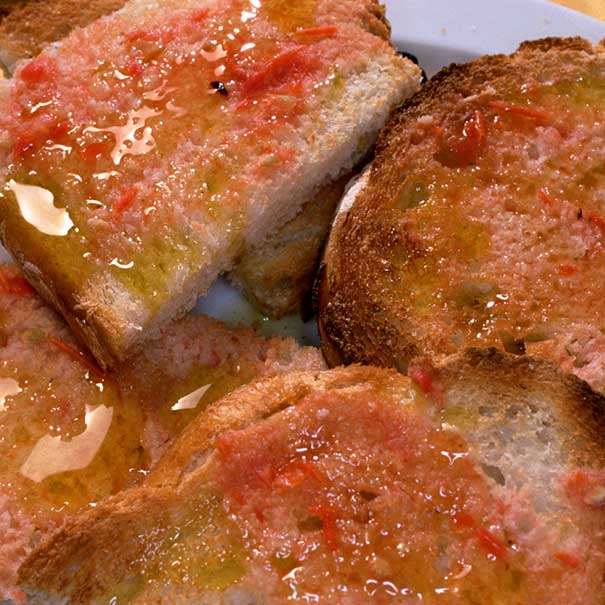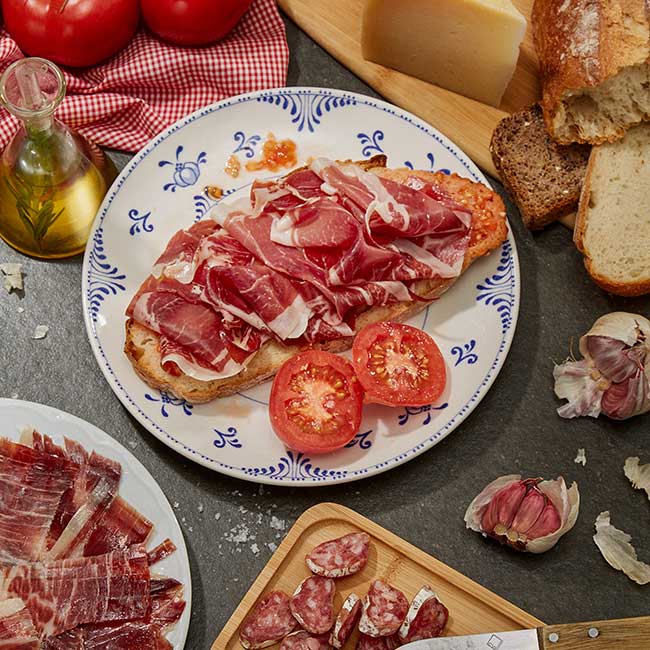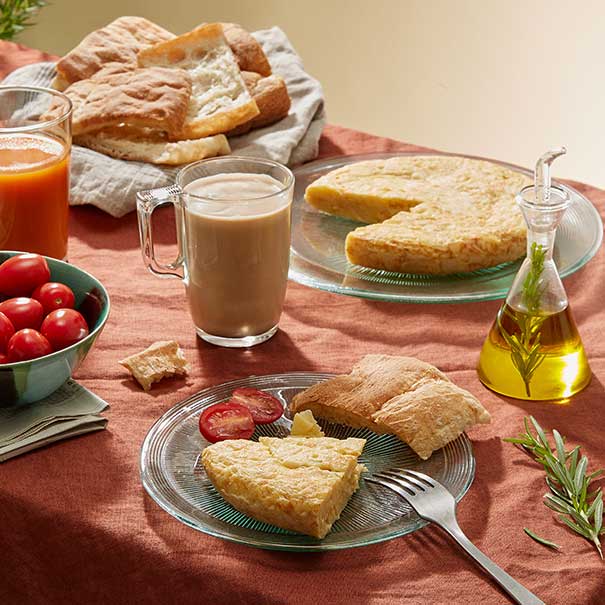.png.transform/rendition-xs/image_image%20(1).png)
Start The Day Spanish Way: a Delicious Breakfast
From morning sugar rushes to meaty delicacies. There are many ways to have breakfast in Spain, drawing on a whole range of native ingredients and recipes. These are not just a matter of taste – everyone has their own style of “breakfasting” – but often of regional variation too.
There are many ways to have breakfast in Spain, drawing on a whole range of native ingredients and recipes. These are not just a matter of taste – everyone has their own style of “breakfasting” – but often of regional variation too.
Malagueños, valencianos, barceloneses, madrileños … all go about the first meal of the day according to their own different customs and signature breakfast dishes. Today these recipes and base ingredients are widely available, across the country and beyond, allowing the modern morning person to choose between certain archetypal Spanish breakfasts:
A Spanish breakfast for the sweet tooth

Relatively few cultures are known to prefer sweet over savoury flavours in the morning, but Spain is one of those exceptions, with many on the mainland and islands habitually needing a sugary hit to wake them up. Ensaimadas have been serving that function for at least 300 years – a form of sweet bread originally made with pig lard on Mallorca, but spreading to breakfast plates across the country and evolving into a less-fatty national favourite, often topped with fruit and/or sugar.
The Valencia region has its own beloved sweet bread, the farton, a leavened, spongy, sugar-glazed treat often dipped a morning coffee or a glass of horchata, the area’s equally popular mixture of milk and tigernuts.
Then there are the ubiquitous magdalenas, another centuries-old dessertlike confection named for a folk tale about a young girl who made lemony, muffinlike cakes to help sustain pilgrims on the Camino de Santiago. They were duly baked and served on religious holidays but gradually became a popular breakfast food.
A Spanish breakfast for the traditionalist

If there is a single item that defines the classic Spanish breakfast it is probably the churros, an iconic pastry named for a native breed of sheep, the churra, whose horns look like these sticklike twists of salty and sweet fried dough. One theory is that nomadic Iberian shepherds invented the snack while working high in the mountains and far from any bakery – they needed the calories, and it was easy enough to make over an open fire.
Others say that Portuguese sailors brought the recipe back from early exploratory voyages to China. In any case, it is now routinely dipped into another breakfast staple: the steaming cup of hot chocolate. And while drinking chocolate in other countries can be a milky, watery affair, the Spanish version is thicker. The standard mixture is chocolate powder and milk, perfect for dunking churros or their even sturdier Madrid-born variation, porras.
A Spanish breakfast for the healthy option

Another of Spain’s favourite breakfasts corresponds well to current trends in healthy eating. Pan con tomate, or pa amb tomàquet, is believed to be a Catalan invention from the 19th century, supposedly created when stale bread was softened up by rubbing tomatoes into it. Today the bread is always fresh and toasted until crisp (ideal for this purpose is a rustic sourdough known as pa de pagès), then slathered with crushed vine tomatoes, sprinkled with salt, and drizzled with extra-virgin olive oil.
It should also be noted that Spain has been a major fruit-growing culture for at least a millennium, and this produce feeds into healthy breakfast menus by way of regional specialities like sliced pomegranate from Granada, or the famous oranges of Valencia. A freshly-squeezed glass of that juice is borderline essential in the morning.
A Spanish breakfast for the ham lover

Spanish ham goes superbly well with many other breakfasts. Serrano in particular, being a tasty but comparatively cheap cut, makes a popular accompaniment to the tomato bread outlined above, or the classic morning dish of huevos rotos, with fried eggs piled on fried potatoes and set off very nicely with a topping of ham.
For those determined to make breakfast the most important meal of the day, there is always the option to upgrade to acorn-fed Ibérico ham (jamón ibérico de bellota), that superior cut of cured leg or shoulder meat from the acorn-fed black Iberian pigs of the southwestern forests. This is such a delicacy that it’s perfect by itself too, perhaps laid on a molette flatbread with a little olive oil.
A Spanish breakfast with the classic omelette and coffee

What other nations call the “Spanish omelette” is known domestically as a tortilla de patatas. Especially beloved in central and northern regions, it’s made to an elementary recipe of eggs and potatoes, with the optional addition of onion, but residents will tend to debate which local cafe or tapas bar serves the best incarnation in terms of flavour and texture. It’s not exclusively a breakfast dish, and works just as well as an afternoon merienda with a cold beer, but what a rib-sticking, energy-giving boost a good tortilla gives you in the morning with a café con leche.
Text: Stephen Phelan

